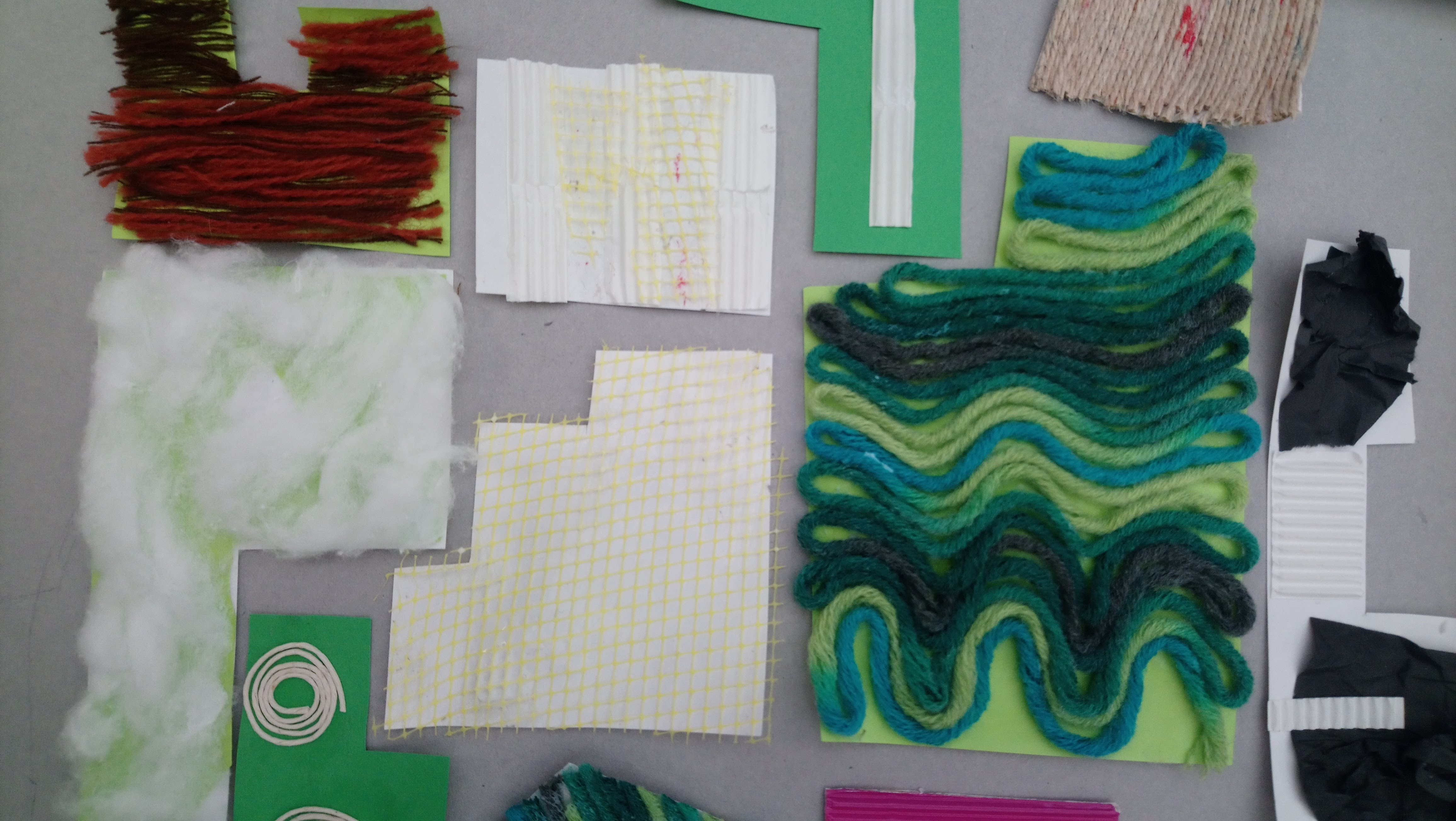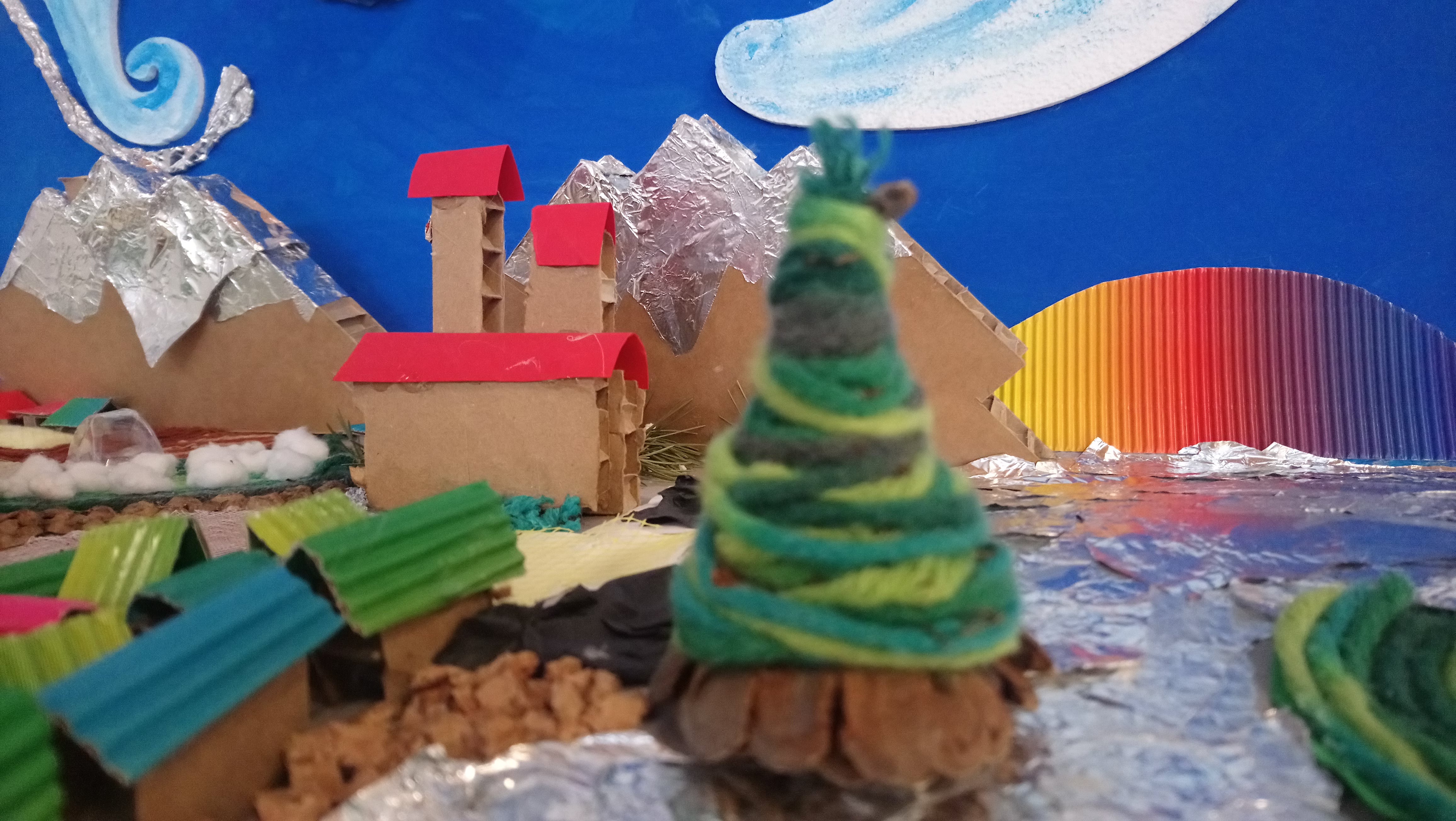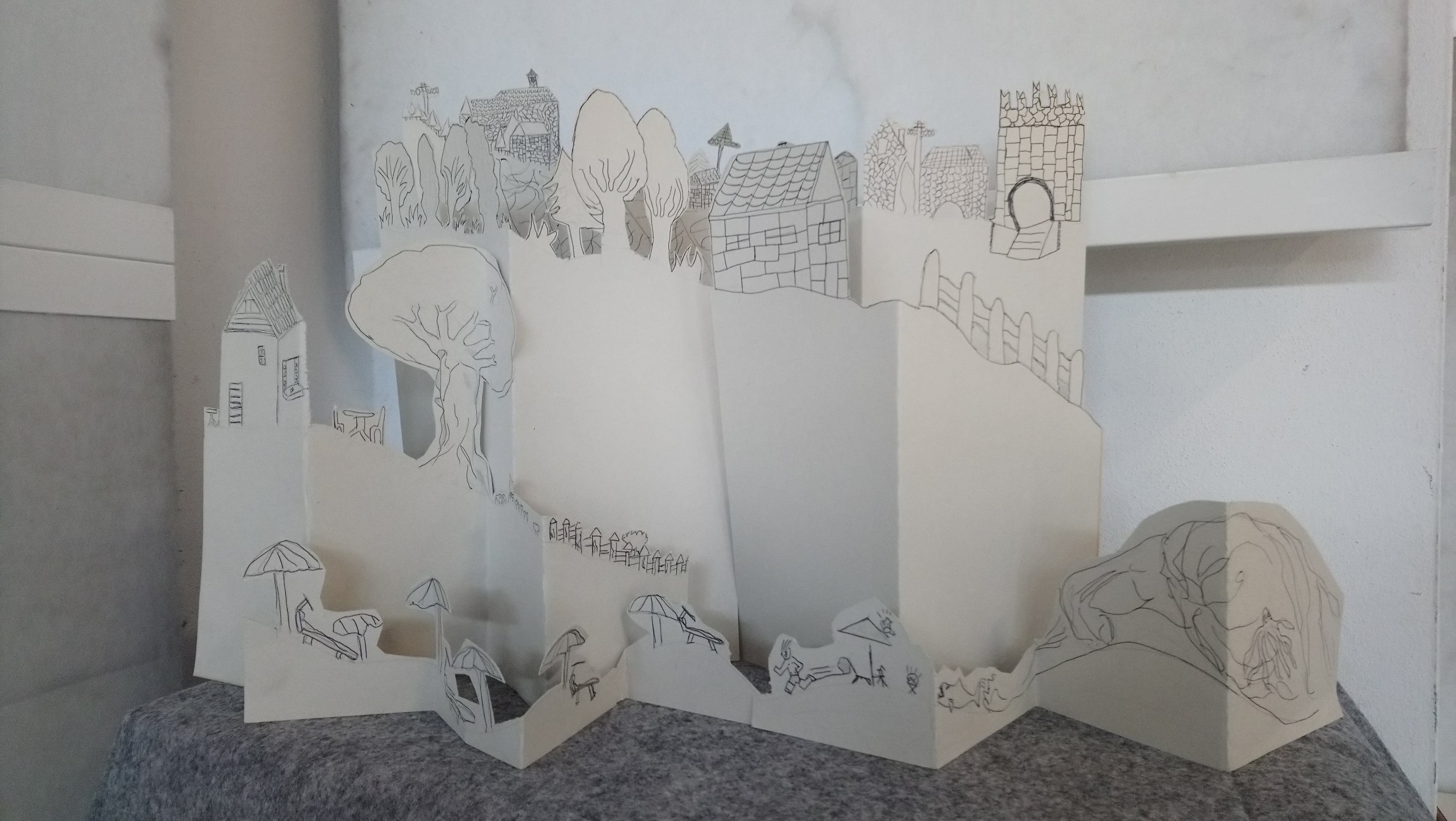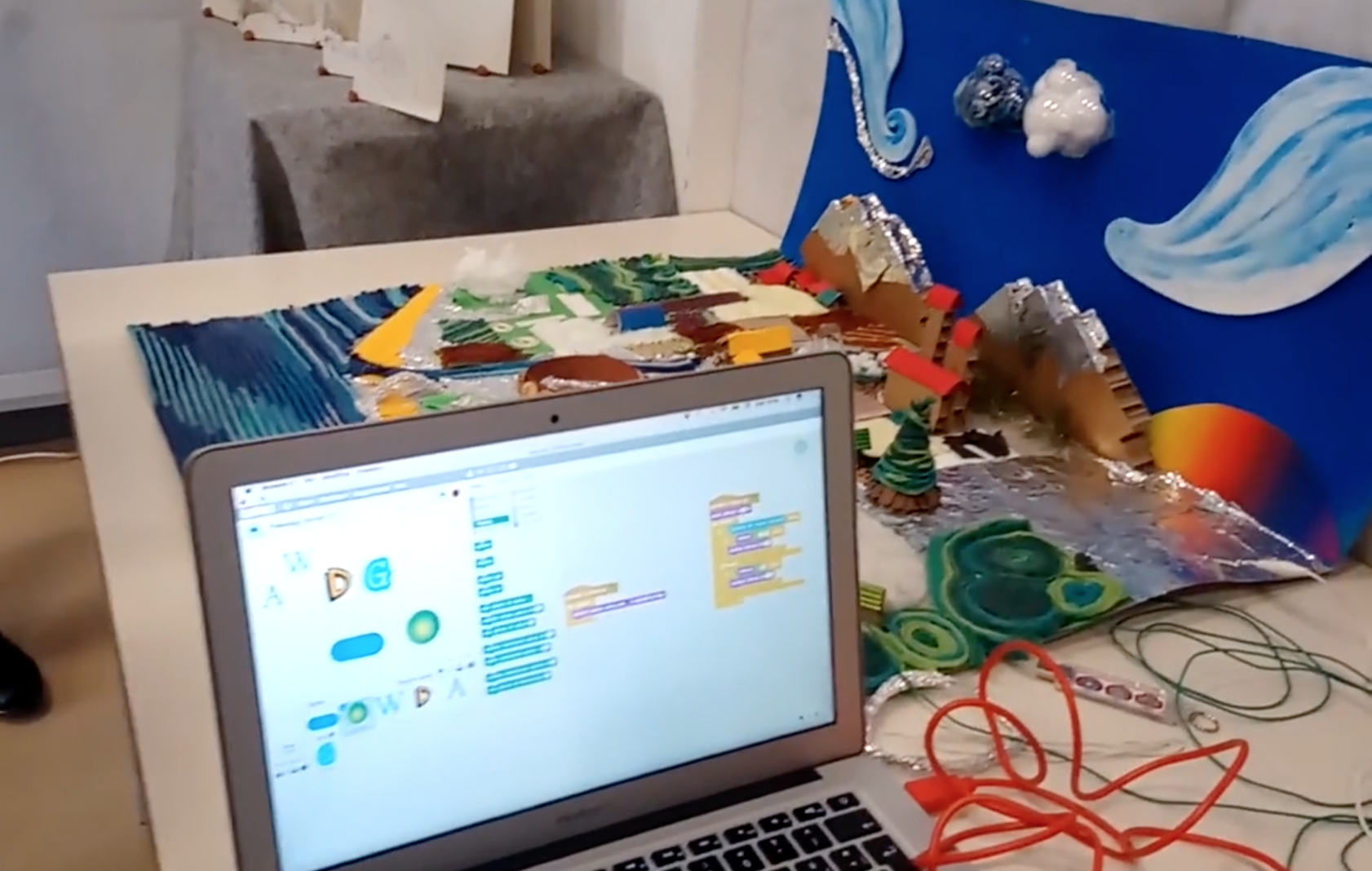Organising institution: Zaffiria
Country: Italy
Age: 11-13 years old
Key question: How does your territory sound? What emotions and feelings do you remember from a sound? How to become a designer of a soundscape?
Objectives:
- know how to read, write and interact with a soundscape;
- know how to use technology in a creative and relevant way related to the landscape;
- to be able to narrate starting from the landscape;
- integrate visual and auditory languages;
- know how to create a sound repertoire.
Time: 8/10 hours
Software and apps to be used:
- audio recording;
- makey-makey;
- audacity;
- scratch.
Main argument: The digital atelier aims to work on the re-elaboration of a soundscape, linking music, letters, art and technology. The soundscape is reproduced with recycled materials and linked to natural and artificial sounds produced by the students thanks to scratch and makey makey.

Brief presentation: This digital atelier aims to make students work on the theme of landscape and technology, integrating also the use of scratch and makey makey. The goal is to create a landscape (in the case of experimentation with recycled materials, but a second one has been designed entirely with paper and carving) able to take in the recorded sound repertoire, which was cataloged and designed by the students. The work of reconstruction of the landscape allows to investigate the structure of the territory: areas with different vocations (for example residential or productive …), natural spaces (for example the management of the water cycle) force the students to find a coherence in the planning, to recognize and respect the rules while organizing their personal sound landscape.
Civic participation:Students approach the territory in which they live with the aim of recreating it and re-interpreting it through listening to sounds and noises. Listening accurately to their places of life and working by integrating status quo and the desire for change and innovation, encourages the will to propose ideas for their local community, increasing the sense of belonging to places.
Preparation of space for the Atelier: The space is set up with tables on which the materials are placed: sponges, bubble wrap, barks, cotton, gauze, colored scotch tape and the available the recycled material. We also used big sheets of wrapping paper (but it is also possible to work on smaller formats) in order to create the first sense maps between the materials and the possible suggestions: “if the landscape was?”
Materials needed:
Each work group needs:
- min. 1 sheet of paper (A4 or A3 format, held horizontally) on which to glue the different materials,
- different natural and artificial materials (sponges, twigs, cotton, scotch tape, plastic …) combining them with the elements of the territory, evoking a possible meaning from the tactile and visual experience (in our case, cotton was used for clouds)
Main inspirations taken from personal research: Portobeseno and the sound exploration of the territory; Soundscapes of the MART Museum of Contemporary Art in Rovereto.
Mass media and social media connections: Some ideas have been identified, such as:
- Use of Instagram with customization of hashtag: #landscape; #Private landscapes
- vision of some films that valorize the theme of the landscape: for example, Lisbon Story by Wim Wenders; The March of the penguins, Grizlyman, Modern Times, Arrival.
- the experience of some Sound designers that are to be discovered on social networks and with a possible online search (for example, Franco Piavoli).
- The role of sound in documentaries.
How do you plan to give voice to students to present or show their personal skills and knowledge? Each class used the sheet “What you do not know about me”.

How do you collect information as the starting point of a Digital Atelier? The class discussed the “what you don’t know about me” sheets collectively, and some students also complemented what they had written based on the suggestions and proposals of their classmates.
Introducing students to the key question – the research begins: If the landscape was a material which would it be? COLLECTIVE WORK – Proposal of a first sensory catalog of the landscape starting from different materials, in particular recycled materials such as wool, sponges, bubble wrap, barks, cotton, polystyrene, gauze, colored scotch tapes, packaging plastics. Creation of a first catalog which will function as “legend” that will guide the realization of the three-dimensional landscape. Work in the creative writing class with three variations:
- elements of the landscape that tell something;
- rhetorical figures that can be connected to the sound;
- lexicon of the landscape in a foreign language (English).
Experimental phase
- Action that unfolds the practical activity to clarify the question (experimental phase): The teacher touches a material, looks at it in detail and tries to manipulate it in order to hear what sounds are produced and incentives the students to a slow and careful work on all materials, that in this phase must be explored with precision, in order to become subsequently materials for the composition.
- Active work of the students: The students experience a first phase of sensorial exploration of the material: they touch, observe, manipulate, smell … and agree with classmates how to create a “legend” of the landscape that will allow everyone, subsequently, to realize the three-dimensional landscape with the same design elements.
- Presentation of findings and results (visualization of information): The legend prepared by the students is hung on the wall, or will be otherwise kept in sight for the duration of the digital atelier as a shared reference point for the design and construction of the landscape.
- Analysis of results: Students’ observation on how much they explored materials and in which way; how was their participation; how they related to their peers to share and mediate meanings.

Project/design phase – part 1
- Second action that unfolds the practical activity (project/design phase): How many sounds are there in our landscape? Creation of a sound archive by trying to track the natural and artificial sounds and sounds of the territory, even using waste and recycling materials chosen for the legend. The students involved in the experimentation also asked to be able to record with the tools and technologies available in the music and technical classroom: traces to be included in the landscape were reworked and selected with audacity.
- Active work of the students: The students recorded the noises of the environment and proposed some sounds that were then recorded and edited in short audio tracks to be included in the landscape. They were subsequently used in the Scratch program created for the laboratory.
- Presentation of findings and results (visualization of information): The students listened to all the sounds, noises and audio tracks available and the work of combining sound and landscape was shared. The work with Scratch has entailed a further binding element for the design of the landscape: how can the electric circuit be closed, so that the sound can be heard as soon as the corresponding surface is touched? Which kind of materials are conductors? How can we integrate them into the landscape?
- Analysis of results: Evaluation of the realized archive of sounds and noises: richness, attention to detail, precision and collaboration in the work.
Project/design phase – part 2
- Third action that unfolds the practical activity (project/design phase): How to become a designer of a soundscape? At this point, fantasy and reality are mixed to give origin to a soundscape that is faithful to the legend that was designed by the students, that is coherent with technical constraints when using Makey-Makey connectors and the sounds/ noises collected while working on the territory of the students’ everyday lives. We chose to produce a three-dimensional work, which sound level has been explored “from above”. A second variant that has been created is a skyline of the landscape of the territory (starting from the study of the main architectures in the own country), on semi-rigid cardboard, accordion folded, so that it can stand up and be explored in a frontal way. The skyline, drawn and carved in the upper part, is combined with sounds and noises thanks to the use of aluminum foil paper, connectors and Makey-Makey that interact with the Scratch programming (see the work, by way of example- “Freedom” by Paul Eluard).
- Active work of the students: The students collectively realized the landscape, subdividing the tasks and areas. Two variations of landscape have been realized: 1)very colorful, with the disposition of the recycled materials on a plan and with the background so it would be able to be seen from above 2)using only cardboard and black pen, tracing delicate and poetic lines and then folding the card board accordion style, in order to be explored in a frontal way. Design of circuits and contact points; Performing of all tests to verify the Scratch operation.
- Presentation of findings and results (visualization of information): Realization of a final exhibition with the work of the students.
- Analysis of results: The seriousness and commitment with which the students worked was praiseworthy. Autonomy is another aspect worth mentioning: each student has found his/her role and the exhibition has been set up and managed by the students who presented their own soundscapes to their parents, other classmates and teachers.
Approach to a new software or a new app: In this digital atelier Scratch,Makey-Makey and audacity are presented. The students explored them in a small group: some students were already competent and participated actively in the design and co-realization of the technological part of the landscape. There were no frontal explanations, students were left with the responsibility of solving technical problems with the materials available and the teachers where available to discuss together on what and how to do.

Links between the Digital Atelier and real life of the students: The digital atelier on the landscape and its sounds aims to support a poetic view and an active listening to the territory in which the students live. The goal is to make people look and listen, with renewed interest, to the student’s visual and acoustic daily life.
How do you plan to evaluate knowledge and skills? It is possible to evaluate both the product and the process. As part of the process, it is essential to pay attention that everyone gets involved with technology and doesn’t stay only in the own comfort zone (for example, by working only manually in the composition of the landscape). Curiosity, the ability to manage a project, face the difficulties that arise, mutual help and personal investment are observable by the teacher during all the work.
Conclusion: Students acquire a working methodology to pass from adolescent consumers to teenager “inventors” of new uses, possibilities, projects. They understand the importance of experimentation, of doing and undoing together and giving the best of themselves; they reflect on something that is part of their daily experience but are enriched with possibilities and meanings thanks to their scholastic experience.